Occupational Safety Training in Hair Dryer Manufacturing
99,000 ₫
Note: The above price is calculated for one person, the price may fluctuate depending on the number of trainees participating in the course and depending on market movements. For more accurate pricing support, please refer to the quotation table or contact our consulting staff directly.
Occupational safety is an important issue in hair dryer manufacturing factories and needs to be addressed promptly to ensure the health and safety of workers, and to enhance the reputation of businesses. The Occupational safety training course is one of the effective solutions to raise awareness about accident prevention for workers participating in hair dryer manufacturing.
Table of Contents
Toggle1. Overview of Hair Dryers
a. What is a Hair Dryer?
A hair dryer is an electrical device used to dry hair by blowing hot air. It consists of an electric motor and a fan to create airflow, along with an air duct and a nozzle to evenly distribute hot air onto the hair. Hair dryers are commonly used in salons and are also popular for home use.

b. Types of Machinery for Hair Dryer Manufacturing
The hair dryer manufacturing process involves multiple steps and uses various types of machinery, such as:
- Metal pressing machines: used to cut and bend metal components of hair dryers.
- Plastic molding machines: used to mold plastic components of hair dryers.
- Wire cutting machines: used to cut electrical wires to the appropriate length.
- Electric welding machines: used to weld electrical components of hair dryers.
- Assembly machines: used to assemble the components and accessories of hair dryers.
- Quality inspection machines: used to check whether the manufactured hair dryers meet quality standards.
In addition, hair dryer production also uses tools such as measuring instruments, inspection machines, computers, and product design software.

c. Hair Dryer Manufacturers in Vietnam
In Vietnam, some well-known hair dryer brands include:
- Kangaroo: Kangaroo is a famous brand in household appliances, including hair dryers. Kangaroo products are highly regarded for their quality and durability.
- Enssa: Enssa is a brand of the LG Electronics Group. Enssa hair dryers have many smart features and attractive designs.
- Panasonic: Panasonic is a globally renowned electronics brand, and its hair dryers are highly rated for quality and durability.
- Philips: Philips specializes in household electronics, and its hair dryers are well-regarded for features and longevity.
- Sunhouse: Sunhouse is a famous brand in household appliances, including hair dryers. Sunhouse products are appreciated for quality and affordability.
d. Specific Jobs in Hair Dryer Manufacturing Plants
Group 1
- Chief Executive Officer, Deputy CEO, and Department Heads in hair dryer manufacturing plants.
Group 2
- Safety Officers: manage safety within the plant, design safety procedures, monitor, and enforce employee compliance with safe working processes.
Group 3
- Component procurement: necessary components and parts for hair dryer production must be purchased from professional suppliers.
- Assembly: parts and components are assembled into complete hair dryers, including steps such as assembling the casing, motor, fan, air duct, and other components.
- Quality inspection: after assembly, hair dryers are checked to ensure proper function and user safety.
- Packing and shipping: after quality inspection, hair dryers are packaged and transported to retail stores or distribution agents.
- Maintenance and repair: maintenance staff may also work in the plant to ensure hair dryers operate efficiently and safely.
Group 4
- Office, service, sales, and marketing roles.
- Production management, quality management, human resources, material management, finance, and accounting.
- Design: design engineers create technical drawings and design hair dryer components, including electrical circuits, fans, motors, air ducts, control buttons, and casing.

2. Overview of Occupational Safety Training for Hair Dryer Manufacturing
This article focuses on issues concerning Group 3, as they are directly involved in production and face the highest occupational safety risks. For information on other groups, see here.
a. What is Group 3 Occupational Safety Training?
- Group 3 occupational safety training consists of classes that equip workers with awareness on preventing workplace accidents.
- The training course helps workers recognize hazards, prevent risks, and reduce the occurrence of workplace accidents during work.
REGISTER FOR OCCUPATIONAL SAFETY TRAINING SERVICE
b. Training Duration
Initial safety training duration:
- Total training time is at least 24 hours, including testing.
- 8 hours of theory on policies and occupational safety laws
- 8 hours of basic occupational safety and hygiene theory
- 4 hours of specialized training theory
- 2 hours of practical training on specialized content
- 2 hours of theoretical exam at the end of the course
The training center will distribute the hours across multiple sessions depending on worker schedules. Typically, there are 6 sessions over 3 days if the company can arrange continuous training time.
Periodic safety training duration:
- Before the occupational safety card expires, workers must undergo periodic safety training, with a duration of at least 50% of the initial training time.
Explanation: The total duration of periodic occupational safety training is at least 12 hours, including testing. Upon completing the periodic training and passing the exam, workers are reissued or renewed the occupational safety card.
c. Training Content
| No. | TRAINING CONTENT | TRAINING TIME (HOURS) | |||
| Total | Including | ||||
| Theory | Practice | Exam | |||
| I | Policies and occupational safety and hygiene laws | 8 | 8 | 0 | 0 |
| 1 | Overview of the legal and regulatory framework on occupational safety and hygiene. | 6 | 6 | ||
| 2 | Standards and technical regulations on occupational safety and hygiene. | 1 | 1 | ||
| 3 | Specific regulations from state management agencies on occupational safety and hygiene when building, expanding, or renovating facilities for production, using, storing, and inspecting machines, equipment, materials, and substances requiring strict occupational safety and hygiene measures. | 1 | 1 | ||
| II | Basic occupational safety and hygiene knowledge | 8 | 8 | 0 | 0 |
| 1 | Basic knowledge of hazardous and harmful factors in the workplace. | 4 | 4 | ||
| 2 | Methods to improve working conditions. | 1 | 1 | ||
| 3 | Safety culture in production and business. | 1 | 1 | ||
| 4 | Rights and responsibilities of employers and employees; policies and regimes regarding occupational safety and hygiene; functions and duties of safety officers. | 1 | 1 | ||
| 5 | Occupational safety rules, safety signs, instructions, use of safety equipment, personal protective equipment, first aid skills, and occupational disease prevention. | 1 | 1 | ||
| III | Specialized training content | 6 | 4 | 2 | 0 |
| Comprehensive knowledge of machines, equipment, and substances generating hazardous or harmful factors; risk analysis, assessment, and management for occupational safety and hygiene; safe working procedures with machines, equipment, and substances with strict occupational safety requirements. | 6 | 4 | 2 | ||
| IV | Final safety training exam | 2 | 2 | 0 | 0 |
| Total | 24 | 22 | 2 | ||
See more training content for all 6 groups
d. Occupational Safety Card
After completing the occupational safety training and passing the exam, workers will be issued a Group 3 occupational safety card (commonly referred to as Group 3 occupational safety certificate).
The Group 3 card clearly shows information such as name, date of birth, specific job, and work environment. It also includes training duration, a red stamp, and a signature confirming course completion.
According to regulations in Clause 2 of Article 24 of Decree 44/2016/ND-CP, there are two cases:
- If the employer and employee have a labor contract, the employer must sign, stamp, and endorse the safety card for the Group 3 worker after completing training and passing the exam from the occupational safety training unit.
- If the worker is freelance or seasonal and does not have a labor contract, the training unit must sign, stamp, and endorse the safety card after training and exam completion.

3. Identifying hazards affecting workers during hair dryer production
Potential hazards affecting workers during hair dryer production include:
- Risk of electric shock: During assembly of hair dryer parts and components, workers may directly contact electrical wires and other electrical parts, posing a risk of electric shock if electrical safety regulations are not properly followed.
- Risk of burns: Hair dryers generate heat and may cause burns to workers during production, especially when handling hot parts by hand or contacting heated components.
- Risk of cuts or scratches: During assembly of hair dryer components, workers may get scratched or cut if protective equipment is not used or production procedures are not properly followed.
- Risk of dust and chemical exposure: Workers may be exposed to dust and chemicals from production materials, cleaning solutions, and other additives during the production process.
- Risk of accidents during testing: Workers may face accidents while testing hair dryers during quality inspection.
4. Common occupational accidents for workers in hair dryer production
Common occupational accidents during hair dryer production include:
- Burns: Workers may get burned if protective gear is not properly worn when working near hair dryers.
- Electrical accidents: Workers may receive electric shocks if hair dryers are used incorrectly or malfunction.
- Muscle injuries: Issues with hands, neck, shoulders, and back are main risks associated with prolonged use of hair dryers.
- Chemical poisoning: Improper use of cleaning agents or chemicals can result in chemical poisoning for workers.
- On-site injuries: Injuries can occur if hair dryers malfunction or are improperly used, leading to accidents like collisions or trips.

5. Safety measures when participating in hair dryer production
To ensure worker safety during hair dryer production, the following safety measures can be applied:
- Ensure protective equipment: Workers must wear safety glasses, masks, gloves, long jackets, and safety shoes to protect eyes, lungs, and hands during operations.
- Install extraction systems: Exhaust systems help remove dust and toxic fumes during production, reducing the risk of poisoning and health impacts on workers.
- Monitor air quality: Periodically check air quality in the factory to ensure environmental and occupational health standards are met.
- Occupational safety training: Workers should be trained in production techniques, equipment usage, and safety measures. Safety procedures and regulations must be fully introduced and followed.
- Use safety equipment: Use protective devices such as laser cutters, generators, air filters, etc., to ensure worker safety and prevent avoidable accidents.
- Regular inspection and maintenance: Equipment and machinery should be regularly inspected, maintained, and repaired to ensure proper operation and minimize risks of malfunctions or accidents during production.
- Periodically conduct workplace environmental monitoring in factories, collect and analyze harmful factors affecting workers, and adjust to reduce hazards to prevent occupational diseases.
6. Benefits of occupational safety training for hair dryer production
An Toan Nam Viet provides your business with the following benefits after completing occupational safety training courses in accordance with Decree 44/2016/ND – CP on occupational health and safety for companies:
- Workers can identify potential occupational hazards and take preventive measures to avoid accidents.
- Businesses can establish risk prevention measures in production, operation, and maintenance processes.
- Reduce costs associated with potential workplace safety risks.
- Uninterrupted production helps increase labor productivity and product quality.
- Ensure compliance with labor safety laws and avoid legal risks.
- Create credibility and professionalism in all aspects, enhancing the company’s brand.
Nam Viet’s training courses are solutions to prevent and protect individuals from external hazards that may cause injuries or, in severe cases, death.
REGISTER FOR OCCUPATIONAL SAFETY TRAINING SERVICE
7. Customer feedback after completing occupational safety training for hair dryer production
An Toan Nam Viet has years of experience supporting businesses across Vietnam, particularly in southern provinces. This responsibility is extremely valuable to Nam Viet, which is why our Occupational Safety Training is increasingly professional. The motivation for Nam Viet’s growth comes from positive feedback and suggestions from businesses. Below are feedback from our valued partners.
Hoa Dat Construction and Trading Joint Stock Company
“Nam Viet’s service has greatly helped us simplify occupational safety and complete safety documentation for operations. The consulting team responded promptly to our inquiries. Five stars for Nam Viet.”
See more customer interviews after using the service from An Toan Nam Viet
8. Occupational Safety Training Capacity of An Toan Nam Viet
An Toan Nam Viet is a reputable and quality occupational safety training center in Vietnam. Training sessions are continuously conducted at factories, production plants, or construction sites nationwide (63 provinces in Vietnam).
REGISTER FOR OCCUPATIONAL SAFETY TRAINING SERVICE
Occupational Safety Training License
- An Toan Nam Viet has been inspected and certified by the Department of Safety under the Ministry of Labor, Invalids and Social Affairs, confirming our capacity to provide occupational safety and hygiene training.

Training Materials and Lectures
- Before being used in OST courses, training materials are reviewed to ensure accuracy and effectiveness.
- Teaching methods follow Nam Viet standards, developed by experts in occupational safety training to maximize knowledge absorption for trainees.
Facilities
- Controlling classroom factors improves teaching efficiency and trainee knowledge absorption.
- Our training facilities provide spacious classrooms meeting standards for area, lighting, and training equipment.
9. Nationwide reputable occupational safety training center
At An Toan Nam Viet, we prioritize professional dedication to occupational safety training. Our mission is to equip workers with knowledge for self-protection, contributing to national development.
We meticulously prepare all tools, equipment, teaching materials, documents, sound, and lighting to ensure effective training.
Our instructors are experts with years of experience, including research on hazard identification and prevention across industries.
Lectures are practical and delivered vividly for easy understanding, allowing trainees to learn comfortably. Knowledge is aligned with Decree 44/2016/ND-CP.
Thus, trainees learn hazard prevention measures and how to protect themselves effectively in the workplace.
Our training center proudly provides professional and reliable occupational safety training with advantages:
- Competitive training costs while ensuring quality.
- Flexible training schedules adapted to company production.
- Quick certification procedures compliant with legal regulations.
- Experienced instructors with many years in the field.
- Controlled classrooms to maximize teaching efficiency and knowledge absorption.
- Lectures tailored to corporate occupational safety.
- Dedicated and professional support for clients quickly and accurately.

10. Additional reference materials for occupational safety training in hair dryer production
- Occupational safety materials for hair dryer production
- Occupational safety training materials set
- Occupational safety training exam set
- Occupational safety training curriculum for hair dryer production
- Occupational safety multiple-choice test for hair dryer production
1 review for Occupational Safety Training in Hair Dryer Manufacturing
No comments yet

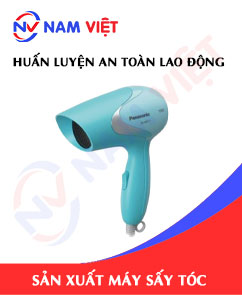
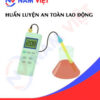
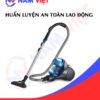







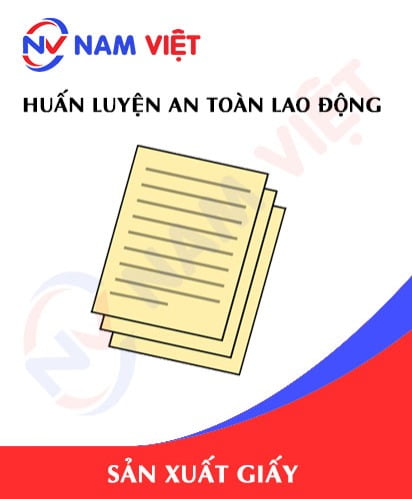


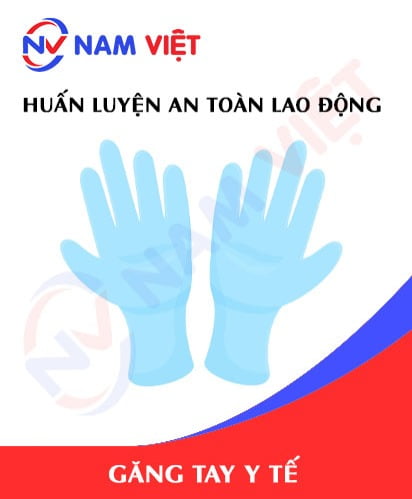
namchinh.haiphong341
Đơn vị an toàn lao động uy tín tại Việt Nam nhé!